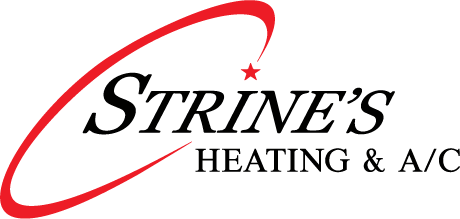
A furnace is usually a background player in your home, ensuring you're warm across the cold winter months. It often doesn’t get noticed until something goes wrong.
One root cause could be that your furnace has a cracked heat exchanger. It’s a potentially dangerous issue, so it’s worthwhile to know the evidence of a cracked heat exchanger and what you should do if you suspect that is the problem.
What Is a Heat Exchanger in a Furnace?
A heat exchanger transfers heat from the combustion chamber of your furnace to the air that moves through the air ducts. It usually handles this with coils or tubes that heat up the air while functioning as a barrier to keep gas produced in the combustion chamber, called flue gasses, from getting out into your home.
Is a Cracked Heat Exchanger Dangerous?
Because of its central role, it’s no surprise that a cracked heat exchanger can pose a risk. A damaged heat exchanger can enable dangerous gasses – like carbon monoxide, which can be lethal – to flow across your home.
For that reason, don't ever turn on your heating if you suspect it has a cracked heat exchanger, as doing so could make the entire household ill. Call an HVAC professional immediately if you are worried your heater has a cracked heat exchanger that needs to be repaired.
Four Symptoms of a Cracked Heat Exchanger:
- Furnace switches off: A cracked heat exchanger can cause your furnace to shut off.
- Strange Smells: If the air leaving your furnace has a powerful chemical scent, it may be a sign gas is leaking through cracks in your heat exchanger. These gasses, which can smell like formaldehyde, are a common warning sign.
- Carbon monoxide alarm goes off or you feel symptoms of poisoning: If a cracked heat exchanger is relieving carbon monoxide inside your home, your carbon monoxide alarm may go off or household members could struggle with signs of carbon monoxide poisoning. Symptoms include headaches, dizziness, weakness, nausea, vomiting or feeling sleepy. If your alarm goes off or you feel unusually tired, leave the home as soon as you can and then call for help.
- Soot: If you find black sooty buildup on the exterior of your furnace, it’s an indication something might be seriously wrong.
What You Should Do if Your Furnace Heat Exchanger is Cracked
If you suspect your furnace has a cracked heat exchanger, call a pro well versed in furnace installation York right away so they can take a look at your system and, if necessary, handle a furnace heat exchanger replacement. Costs should differ depending on the situation, but estimates run in the neighborhood of $1,000 to $3,000.
However, the good news is that heat exchangers are generally included in the warranty. You should check the warranty paperwork on your furnace, as while the warranty might not cover the entire cost of repairs, it could significantly reduce your bill.
How to Avoid a Cracked Heat Exchanger in Your Home
One of the best ways to avoid problems in your furnace overall is via regular furnace maintenance. Furnaces offer the most benefits when they run efficiently. Hiring a certified professional to examine your furnace for old parts, clogged filters and other common problems can keep you from getting a big bill later on.
It’s also helpful to inspect your furnace filters every few months – it’s ideal some filters be swapped out every 90 days or sooner if they are dirty or grimy. While the filters are not part of the heat exchanger itself, the strain of dragging air through a clogged filter makes the entire furnace work longer to complete its job. And the harder your furnace works, the more strain parts like the heat exchanger will experience.
